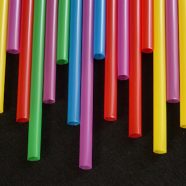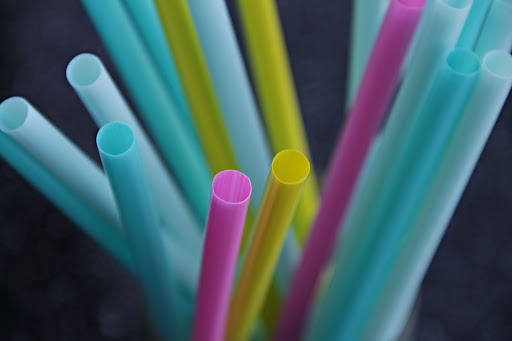
Plastic extrusion is a cornerstone in modern manufacturing, powering countless industries with its innovative capabilities. A comprehensive exploration of plastic extrusion advantages and disadvantages offers a window into its vast potential and the intricacies that define it. Drawing from extensive experience in plastic extrusion, Keller Plastics offers valuable insights and a distinctive take on this transformative process.
Advantages and Disadvantages of Plastic Extrusion in Different Industries
In the realm of manufacturing, the plastic extrusion advantages and disadvantages have shaped how industries approach design, production, and scalability. The adaptability of this technique, coupled with its capacity for high-volume production, presents a compelling case for its adoption across sectors.
Automotive Industry
Driven by consistent innovation, the automobile industry has recognized and adopted the inherent advantages of plastic extrusion.
Advantages:
- Complex Parts: Components such as bumper inserts, door seals, and sunroof channels can be manufactured with intricate designs and impeccable precision.
- Weight and Cost Efficiency: Plastic extrusion provides lightweight alternatives that are cost-effective, impacting the overall vehicle efficiency positively.
- Durability: Materials like Polycarbonate and ABS, often extruded, provide longevity, reducing wear and tear over time.
Disadvantages:
- Material Limitations: Certain automotive applications necessitate materials that might not be optimal for extrusion.
- Quality Consistency: Maintaining uniformity across large batches, especially with complex designs, poses challenges.
In light of the automobile industry’s drive for efficiency and innovation, the benefits of plastic extrusion, notably its capacity for creating intricate designs, cost-effectiveness, and the durability of extruded materials, notably overshadow its challenges.
While there are material limitations and consistency hurdles, the overall impact of plastic extrusion on vehicle performance and longevity signifies its pivotal role in automotive advancements.
Construction and Infrastructure
Navigating the expansive realm of construction reveals the undeniable footprint of plastic extrusion, ranging from foundational elements to ornate architectural details.
Advantages:
- Versatile Applications: Extruded profiles find usage in window frames, insulation materials, and even decorative trims.
- Durability: These profiles offer resistance to elements, ensuring longevity.
- Customization: The array of designs that can be achieved allows for customization tailored to specific architectural needs.
Disadvantages:
- Upfront Costs: Significant initial investments are sometimes required, especially for large-scale construction projects.
- Environmental Considerations: Sustainability practices need constant vigilance to ensure minimal environmental impact.
Weighing the plastic extrusion advantages and disadvantages in the construction landscape, it becomes evident that the versatility, durability, and customization options significantly bolster its standing.
While initial investments and environmental considerations are genuine concerns, the overarching benefits of extruded profiles in addressing various construction demands assert the method’s indispensable value in the industry.
Packaging Industry
Diving into the world of packaging reveals the pronounced influence of plastic extrusion, with its unmatched versatility serving as the linchpin.
Advantages:
- Tailored Solutions: From flexible films for food products to rigid containers for cosmetics, plastic extrusion provides bespoke packaging solutions.
- Rapid Production: High demand in the packaging sector is met with timely, efficient production.
- Recyclability: Certain extruded plastics can be recycled, offering eco-friendly packaging options.
Disadvantages:
- Environmental Concerns: Over-reliance on non-recyclable plastics poses disposal and environmental challenges.
- Material Restrictions: Not all desirable materials for packaging can be efficiently extruded.
The packaging world’s relentless demand for innovation finds a robust response in plastic extrusion, even as it grapples with environmental challenges.
Medical Devices and Healthcare
In the precision-driven realm of medical applications, plastic extrusion has carved an indelible niche.
Advantages:
- High Precision: Intricate medical devices, tubing, and surgical tools can be manufactured with impeccable accuracy.
- Sterility: Ensuring the aseptic nature of medical components is vital, and extrusion can meet these stringent standards.
- Material Diversity: Different medical applications can leverage the wide array of materials suitable for extrusion.
Disadvantages:
- Strict Standards: Adhering to the global medical standards can be daunting, requiring constant quality checks.
- Material Limitations: Some specialized medical tools may need materials not optimal for extrusion.
Navigating the exacting world of medical applications, plastic extrusion stands as a beacon of reliability, even as it navigates the labyrinth of standards and precision.
Advantages and Disadvantages of Plastic Extrusion Process in Production
Plastic extrusion, with its remarkable benefits and challenges, stands as a hallmark in modern manufacturing. Being a cornerstone of both efficiency and innovation, the process holds a special place in production narratives. As we explore deeper, understanding the plastic extrusion advantages and disadvantages becomes paramount.
Scalability and Efficiency
One of the most notable strengths of plastic extrusion is its impressive scalability. Owing to its continuous nature, it is uniquely equipped to manage large-scale production, solidifying its reputation in the industry.
In terms of advantages, the plastic extrusion process offers a steady and streamlined output, ensuring that production rates are always at their peak. Moreover, its efficient nature implies reduced waste, translating to more cost-effective operations. However, no process is without its challenges.
While plastic extrusion is unrivaled for bulk manufacturing, when it comes to bespoke, small-batch productions, certain adjustments might be required, which could potentially influence turnaround times. Nonetheless, for ventures that prioritize volume, the pros of plastic extrusion often surpass its cons.
Design Flexibility and Prototyping
Plastic extrusion offers a remarkable degree of flexibility, catering to a spectrum of design needs. This adaptability is crucial in meeting the diverse demands of both widespread and specialized markets.
On the upside, this method provides an extensive range of design capabilities. Whether it’s simple geometries or intricate profiles, plastic extrusion is up to the task. Moreover, the possibility of quick prototyping allows businesses to test and refine designs before committing to large-scale production.
On the flip side, given the plethora of design options, there is an inherent challenge in ensuring uniform quality across all products. Regular quality checks become essential. Yet, in the grand scheme of things, the design latitude offered by plastic extrusion is a testament to its indispensable nature in modern manufacturing.
Integration with Advanced Manufacturing Techniques
Merging plastic extrusion with contemporary manufacturing technologies opens up avenues for product innovation and enhancement.
From an advantage standpoint, the synergy between plastic extrusion and technologies, like 3D printing, can birth cutting-edge products. Furthermore, such integrations can refine and expand the capabilities of the processes involved. However, as with all integrations, certain technical challenges can emerge.
Achieving a harmonious blend of plastic extrusion with other techniques may require niche expertise. Despite these hurdles, the opportunities presented by such integrations are too significant to be overlooked. The nuanced advantages and challenges of plastic extrusion highlight its pivotal role in present-day production ecosystems.
Innovative Applications and Benefits of Plastic Extrusion
The dynamic world of plastic extrusion presents a myriad of applications and benefits, accentuated by technological advancements and innovative techniques. A central focus of the industry is to cater to the ever-evolving needs of diverse sectors while upholding the principles of efficiency, quality, and sustainability. Within this context, the plastic extrusion advantages and disadvantages become a focal point of discussion.
Material Conservation and Waste Reduction
By prioritizing material optimization, plastic extrusion ensures that each bit of raw material is used to its fullest, leading to minimal waste. This dedication to environmental responsibility aligns with industry-leading practices and worldwide sustainability objectives.
- Recyclability: One of the prime benefits of plastic extrusion is its ability to integrate recycled materials into the production cycle, further diminishing waste generation.
- Optimized Material Use: Advanced machinery and techniques allow for precise measurements, ensuring minimal material excess and overruns.
- Reduced Production Scrap: Unlike some other manufacturing methods, plastic extrusion typically results in lower amounts of production scrap, amplifying its eco-friendly nature.
Discussing the plastic extrusion advantages and disadvantages, it’s evident that the process offers unparalleled durability and longevity. This is attributed to meticulous quality control measures and the inherent precision of plastic extrusion, producing products that set the benchmark in industry standards and are designed for extended use.
Central to this durability are the high-quality resins employed in the extrusion, which bolster the products’ strength and resilience. Coupled with cutting-edge manufacturing controls, this ensures that every product batch maintains consistent quality, minimizing potential defects. Additionally, plastic extrusion crafts products to resist environmental challenges, such as UV rays, moisture, and temperature fluctuations, further enhancing their lifespan.
Addressing the Disadvantages of Plastic Extrusion
In pursuing transparent and informed discussions, we must discuss certain challenges associated with plastic extrusion. A comprehensive understanding of both the plastic extrusion advantages and disadvantages offers a balanced perspective, crucial for making informed decisions in the industry.
However, it’s essential to underscore that with every perceived challenge, there’s an inherent opportunity or solution that can be leveraged, ensuring the continued prominence and success of plastic extrusion.
Initial Capital and Investment
Delving into the plastic extrusion industry involves a considerable initial capital expenditure, primarily attributed to procuring sophisticated machinery, infrastructure, and technology critical for achieving superior production quality, which can be daunting for startups or smaller businesses.
However, we can gain perspective on its value by framing this as a strategic long-term investment. The enduring market demand for extruded products and the inherent product quality stemming from the plastic extrusion process underscores that initial investments can be recovered, setting the stage for consistent profitability.
Specialized Skillsets and Training
Mastering plastic extrusion goes beyond operating machinery; it calls for a profound grasp of the intricate intricacies of the extrusion process, the materials in play, and the quest for impeccable quality. This underscores the necessity of ongoing training to align with emerging technologies and best practices.
This focus on expertise should not be seen as a limitation within the scope of plastic extrusion advantages and disadvantages. Instead, it signifies a dedication to excellence. By prioritizing training and skills enrichment, businesses position themselves to have top-tier professionals guiding the production, leading to products that not only align with but often surpass industry standards.
With its vast potential and unique challenges, plastic extrusion undeniably steers the course of numerous industries today. Understanding the full spectrum of plastic extrusion advantages and disadvantages equips us with a well-rounded perspective, ensuring well-informed decisions. If you seek guidance or are keen on leveraging the unparalleled capabilities of this process, contact Keller Plastics — where we craft the future, one extrusion at a time.





